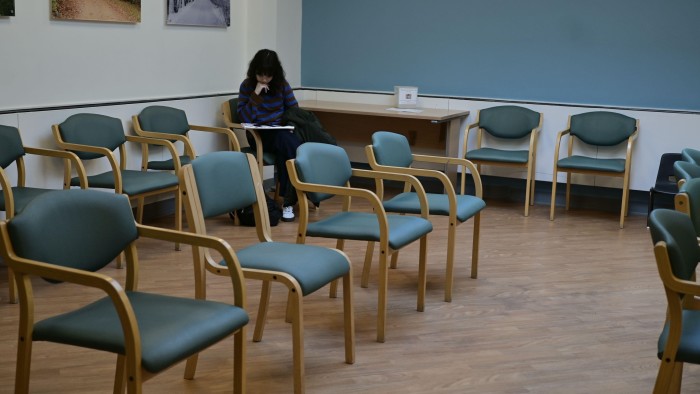Unlock the Editor’s Digest for free
Roula Khalaf, Editor of the FT, selects her favourite stories in this weekly newsletter.
The writer is chief executive of the Nuffield Trust
After 12 months in office, and as the NHS hits its 77th anniversary, the government this week unveiled its 10-Year Health Plan. But unlike the two other NHS plans published in the past decade, Labour’s landed with no downpayment of extra money beyond recently pledged funds that will just about keep the service’s lights on and cover the pay cheques of its 1.5mn staff.
At 168 pages, the plan is as ambitious as it is long. It outlines a dizzying array of aspirations to achieve a modern, AI-enabled health system rooted in people’s communities, in their homes and in their pockets via a revamped NHS app. Central to this is a proposition that the decades-old imbalance in how we fund and deliver healthcare will be reset — moving power, care and money from hospitals to communities, the places where we all live, work, shop and, increasingly, die.
This vision is the right one. Patients have been at the mercy of a system that serves the needs of those in charge of it rather than those in need of it. Care closer to home, joined up around patients’ lives, is both a popular goal and apt for a society in which people often live with many different long-term conditions.
But the plan’s crucial weakness is the belief that this approach will save the NHS money in the short to medium term and help the health service achieve financial sustainability. This is not backed by the evidence. While some initiatives — such as virtual wards, where patients are monitored, treated and supported at home — can reduce hospital admissions, the NHS has a poor record of achieving lasting financial savings by shifting care away from hospitals.
Before I joined the Nuffield Trust, I spent nearly a decade leading Leeds Community Healthcare Trust. I’ve seen first-hand the difference that truly joined-up, community-based care can make. I want this shift to succeed — few people want it more. But this isn’t a matter of faith. I know how it can work, and how brilliant it can be when it does. What I don’t see, yet, is how the sums add up.
Studies show that services in people’s local areas often find new patients to treat, whose unmet need suddenly — and rightly — brings further costs. Hospitals benefit from economies of scale: this is often not possible in the community. If care is moved to a more efficient local or home-based setting, it can take many years to cash in any savings: closing wards or hospital beds cannot happen overnight.
Other countries show that moving more care closer to home can ease pressure on hospitals. Denmark has managed to cut waiting times and shorten stays by strengthening services in the community. But the Danes started from a much stronger position, with relatively well-developed local services, a clear long-term plan to support this shift and substantial upfront investment.
Ireland has tried a similar approach, expanding access to care outside hospitals, closer to home. There are signs this has reduced some of the strain on hospital departments. But progress has been slow and hasn’t, on its own, been enough to bring down long hospital waits, which needed extra investment.
Even though the ambition for England’s NHS is clear, it will be harder to achieve. For years, most NHS funding increases have flowed disproportionately to hospital services, and other staff groups have been severely depleted. Between 2016/17 and 2022/23, acute care received average funding increases of 4.4 per cent annually, compared to 0.5 per cent for community services. The number of district nurses — a vital group to help tailor care at home — has fallen by 43 per cent from 2009 to 2024, while hospital nurses have grown by the same amount. There is a lot of catching up to do.
